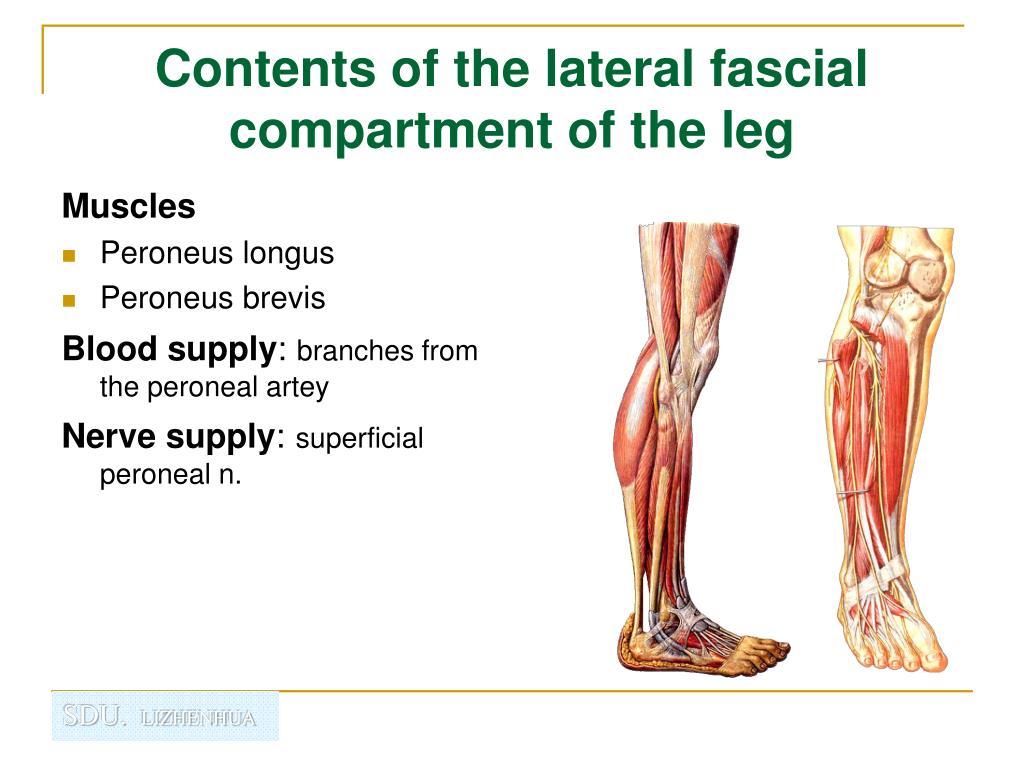
Middle and distal phalanges of lateral four digitsĮxtends lateral four digits and dorsiflexes ankle Lateral condyle of tibia and superior three quarters of medial surface of fibula and interosseous membrane Middle part of anterior surface of fibula and interosseous membraneĭorsal aspect of base of distal phalanx of great toe (hallux) Medial and inferior surfaces of medial cuneiform and base of 1st metatarsal Lateral condyle and superior half of lateral surface of tibia and interosseous membrane It contains muscles that produce dorsiflexion and participate in inversion and eversion of the foot, as well as vascular and nervous elements, including the anterior tibial artery and veins and the deep fibular nerve. Fortunately, nowadays, any of these cosmetically undesirable leg veins can be conveniently removed by either Sclerotherapy, or other safe procedures for the removal of varicose veins.The anterior compartment of the leg is a fascial compartment of the lower leg. Superficial veins on the other hand, have less muscle support accordingly, congestion in these veins is much more likely to result in spider veins or bulgy, dilated and twisted varicosities. The formation of varicose veins in the ‘deep’ veins is relatively rare because they are supported by the surrounding muscles. The very superficial and often undesirable visible branches are known as varicose, reticular, and spider veins. The leg veins that deteriorate the most as people age are the superficial veins and perforator veins. Large bulging leg veins are often tributaries of either saphenous veins.

The Short or Lesser Saphenous Vein, on the other hand, runs in the back of the calf from the level of the ankle to the back of the knee where it drains into the deep venous system (saphenopopliteal junction). This vein derives its name from the word safina, meaning “hidden”, because it is “hidden” under a layer of connective tissue. The Great Saphenous Vein is the longest vein in the body it runs from inside of the ankle, to the inside of the knee, and up to the groin where it joins the femoral vein (saphenofemoral junction). The truncal veins (similar to the trunk of the upside-down tree mentioned earlier) are made up of the Great Saphenous Veins (GSV), and the Small Saphenous Vein (SSV), also known as Lesser Saphenous Vein or (LSV ). Superficial veins include innumerable venous tributaries known as collecting veins, as well the truncal veins and their tributaries. THE PRINCIPLE SUPERFICIAL AND DEEP VEINS OF THE LEG One is the deep vein system that runs within the muscles of the legs, and the other is the superficial vein system that runs in the fat layer between the muscle compartments and the skin.

This task is accomplished through two vein systems that run parallel to each other. The venous structure of the lower limb may be envisioned as similar to an upside-down tree, with blood originating in superficial venous capillaries and moving upward and inward through increasingly larger veins on its way towards the heart.

Veins can be categorized into superficial and deep veins. With a few exceptions, like the veins carrying blood from the lungs to the heart, veins that return blood from the body carry oxygen poor (deoxygenated) blood. A vein can range in size from 1 millimeter to 1.5 centimeters in diameter. Arteries on the other hand, carry blood away from the heart, completing the circulatory system. Veins (from the Latin vena) are blood vessels that carry blood towards the heart. Leg Vein Anatomy - An Overiew Veins – Function and Categorization


 0 kommentar(er)
0 kommentar(er)
